Fast Facts
- When: 12th to 15th March 2024
- Where: Cheltenham Racecourse, Gloucestershire GL50 4SH
- Watch: Most races live on ITV
- Official Website: Cheltenham Racecourse
The Cheltenham Festival is one of the biggest horse racing meetings of the year. In fact, the festival is only second in stature to that of the Grand National at Aintree in the UK, and also attracts massive audiences from around the world.
With the cards packed full of big races each day, it should come as no surprise to hear that the bookies throw offers around by the bucket load, which is great news for us punters!
So, whether you’ll be donning your tweed and attending the festival in person or betting from the comfort of your own home, there’s plenty for you to fill your boots with.
Existing Customer Free Bets & Money Back Offers
Please Note: This event has now ended.
Stats Articles
- Who Has Won the Cheltenham Gold Cup the Most Times? The Top Horses, Trainers & Jockeys
- How Often Do Horses Fall at the Cheltenham Festival?
- How Often Does the Favourite Win at the Cheltenham Festival?
- The Most Successful Jockeys at the Cheltenham Festival
- Consecutive Cheltenham Wins: Which Horses Have Won a Race in Multiple Festivals?
- Who Has Won the Prestbury Cup the Most At The Cheltenham Festival?
Event Stats
Leading 2023/24 British National Hunt Trainers
| Rank | Trainer | Prize Money | Wins | Runners | Win % |
|---|---|---|---|---|---|
| 1 | Paul Nicholls | £2,224,534 | 102 | 411 | 24.8% |
| 2 | Dan Skelton | £1,829,293 | 86 | 589 | 14.6% |
| 3 | Nicky Henderson | £1,683,073 | 77 | 360 | 21.4% |
| 4 | Venetia Williams | £1,229,853 | 47 | 240 | 19.6% |
| 5 | Gary Moore | £950,054 | 50 | 321 | 15.6% |
| 6 | Fergal O’Brien | £942,764 | 87 | 432 | 20.1% |
| 7 | Nigel Twiston-Davies | £925,888 | 67 | 338 | 19.8% |
| 8 | Olly Murphy | £850,126 | 76 | 371 | 20.5% |
| 9 | Ben Pauling | £829,675 | 63 | 344 | 18.3% |
| 10 | Jonjo O’Neill | £780,313 | 62 | 400 | 15.5% |
Leading 2023/24 Irish National Hunt Trainers
| Rank | Trainer | Prize Money | Wins | Runners | Win % |
|---|---|---|---|---|---|
| 1 | Willie Mullins | € 5,146,975 | 222 | 670 | 33.1% |
| 2 | Gordon Elliott | € 3,937,905 | 186 | 1096 | 17.0% |
| 3 | Henry de Bromhead | € 1,552,980 | 72 | 464 | 15.5% |
| 4 | Gavin Cromwell | € 866,940 | 56 | 464 | 12.1% |
| 5 | Philip Rothwell | € 427,475 | 35 | 398 | 8.8% |
| 6 | Martin Brassil | € 388,995 | 10 | 63 | 15.9% |
| 7 | Peter Fahey | € 339,890 | 17 | 176 | 9.7% |
| 8 | Joseph Patrick O’Brien | € 338,015 | 17 | 97 | 17.5% |
| 9 | John Patrick Ryan | € 331,510 | 14 | 262 | 5.3% |
| 10 | Noel Meade | € 286,890 | 12 | 105 | 11.4% |
Leading 2023/24 British National Hunt Jockeys
| Rank | Jockey | Wins | Rides | Win % |
|---|---|---|---|---|
| 1 | Harry Cobden | 138 | 588 | 23.5% |
| 2 | Sean Bowen | 128 | 577 | 22.2% |
| 3 | Brian Hughes | 99 | 645 | 15.3% |
| 4 | Sam Twiston-Davies | 90 | 522 | 17.2% |
| 5 | Gavin Sheehan | 78 | 439 | 17.8% |
| 6 | Harry Skelton | 57 | 318 | 17.9% |
| 7 | Nico de Boinville | 49 | 201 | 24.4% |
| 8 | Jonjo O’Neill Jr. | 47 | 287 | 16.4% |
| 9 | Sean Quinlan | 45 | 401 | 11.2% |
| 10 | Ben Jones | 43 | 249 | 17.3% |
Leading 2023/24 Irish National Hunt Jockeys
| Rank | Jockey | Wins | Rides | Win % |
|---|---|---|---|---|
| 1 | Jack Kennedy | 108 | 459 | 23.5% |
| 2 | Paul Townend | 102 | 251 | 40.6% |
| 3 | Patrick Mullins | 53 | 118 | 44.9% |
| 4 | Keith Donoghue | 51 | 340 | 15.0% |
| 5 | Rachael Blackmore | 48 | 310 | 15.5% |
| 6 | Mark Walsh | 47 | 224 | 21.0% |
| 7 | Darragh O’Keeffe | 37 | 433 | 8.5% |
| 8 | Danny Mullins | 35 | 331 | 10.6% |
| 9 | Danny Gilligan | 35 | 207 | 16.9% |
| 10 | Sean Flanagan | 27 | 373 | 7.2% |
Top Rated British Chasers in 2023/24
| Horse | Rating | Age | Trainer |
|---|---|---|---|
| Shishkin | 173 | 10 | Nicky Henderson |
| Jonbon | 170 | 8 | Nicky Henderson |
| Bravemansgame | 170 | 9 | Paul Nicholls |
| L’Homme Presse | 168 | 9 | Venetia Williams |
| Stage Star | 166 | 8 | Paul Nicholls |
| Edwardstone | 166 | 10 | Alan King |
| Royale Pagaille | 166 | 10 | Venetia Williams |
| Protektorat | 165 | 9 | Dan Skelton |
| Editeur Du Gite | 162 | 10 | Gary Moore |
| The Real Whacker | 162 | 8 | Patrick Neville |
| Pic D’Orhy | 162 | 9 | Paul Nicholls |
Top Rated Irish Chasers in 2023/24
| Horse | Rating | Age | Trainer |
|---|---|---|---|
| Galopin Des Champs | 180 | 8 | Willie Mullins |
| El Fabiolo | 175 | 7 | Willie Mullins |
| Allaho | 173 | 10 | Willie Mullins |
| Fastorslow | 170 | 8 | Martin Brassil |
| Hewick | 169 | 9 | John Joseph Hanlon |
| A Plus Tard | 167 | 10 | Henry de Bromhead |
| Gerri Colombe | 167 | 8 | Gordon Elliott |
| Noble Yeats | 165 | 9 | Emmet Mullins |
| Conflated | 164 | 10 | Gordon Elliott |
| Envoi Allen | 164 | 10 | Henry de Bromhead |
| Gentleman De Mee | 164 | 8 | Willie Mullins |
| I Am Maximus | 164 | 8 | Willie Mullins |
Top Rated British Hurdlers in 2023/24
| Horse | Rating | Age | Trainer |
|---|---|---|---|
| Constitution Hill | 175 | 7 | Nicky Henderson |
| Shishkin | 163 | 10 | Nicky Henderson |
| Not So Sleepy | 158 | 12 | Hughie Morrison |
| Crambo | 157 | 7 | Fergal O’Brien |
| Paisley Park | 157 | 12 | Emma Lavelle |
| Dashel Drasher | 156 | 11 | Jeremy Scott |
| Champ | 156 | 12 | Nicky Henderson |
| Knappers Hill | 152 | 8 | Paul Nicholls |
| Botox Has | 152 | 8 | Gary Moore |
| Nemean Lion | 151 | 7 | Kerry Lee |
Top Rated Irish Hurdlers in 2023/24
| Horse | Rating | Age | Trainer |
|---|---|---|---|
| State Man | 169 | 7 | Willie Mullins |
| Bob Olinger | 161 | 9 | Henry de Bromhead |
| Teahupoo | 161 | 7 | Gordon Elliott |
| Impaire Et Passe | 160 | 6 | Willie Mullins |
| Irish Point | 158 | 6 | Gordon Elliott |
| Ballyburn | 155 | 6 | Willie Mullins |
| Home By The Lee | 155 | 9 | Joseph Patrick O’Brien |
| Lossiemouth | 155 | 5 | Willie Mullins |
| Pied Piper | 155 | 6 | Gordon Elliott |
| Sir Gerhard | 155 | 9 | Willie Mullins |
Schedule
The meeting starts on Tuesday, which is known Champion Day. Races then run through until the Friday of the same week, with Wednesday being Style Wednesday, Thursday St. Patrick’s Day and Friday Gold Cup Day. With each day comes a mix of Class 1 races, with Grade 1’s, Grade 2’s, Premier Handicaps and some lower class but competitive races for good measure.
Day One – Champion Day, Tuesday, 12th March 2024
The opening day features four Grade 1 races that include The Supreme Novices’ Hurdle, The Arkle Chase, Champion Hurdle and the Mares’ Hurdle. On top of that you have one Grade 2 race, the National Hunt Cup, and two Premier Handicaps in the Ultima Handicap Chase and the Fred Winter Juvenile Handicap Hurdle.
- 1:30 – Sky Bet Supreme Novices’ Hurdle (Grade 1) – 2m ½f
- 2:10 – My Pension Expert Arkle Challenge Trophy Novices’ Chase (Grade 1) – 2m
- 2:50 – Ultima Handicap Chase (Premier Handicap) – 3m 1f
- 3:30 – Unibet Champion Hurdle (Grade 1) – 2m ½f
- 4:10 – Close Brothers Mares’ Hurdle (Grade 1) – 2m 4f
- 4:50 – Boodles Juvenile Handicap Hurdle (Premier Handicap) – 2m ½f
- 5:30 – Maureen Mullins National Hunt Challenge Cup Amateur Jockeys’ Novices’ Chase (Grade 2) – 3m 6f
Day Two – Style Wednesday, 13th March 2024
Day two sees four more Grade 1 races in the form of the Gallagher Novices’ Hurdle, the Brown Advisory Novices’ Chase, the Queen Mother Champion Chase and the Champion Bumper. The two Premier Handicap races of the day are the Coral Cup and the Grand Annual. There is also noramlly the Class 2 Glenfarclas Cross Country Chase, though this has been cancelled in 2024 due to the course being waterlogged.
Revised Schedule
- 1:45 – Gallagher Novices’ Hurdle (Grade 1) – 2m 5f
- 2:30 – Brown Advisory Novices’ Chase (Grade 1) – 3m ½f
- 3:15 – Coral Cup Handicap Hurdle (Premier Handicap) – 2m 5f
- 4:00 – Betway Queen Mother Champion Chase (Grade 1) – 2m
- 4:50 – Johnny Henderson Grand Annual Challenge Cup Handicap Chase (Premier Handicap) – 2m
- 5:30 – Weatherbys Champion Bumper (Grade 1) – 2m ½f
Original Schedule
- 1:30 – Gallagher Novices’ Hurdle (Grade 1) – 2m 5f
- 2:10 – Brown Advisory Novices’ Chase (Grade 1) – 3m ½f
- 2:50 – Coral Cup Handicap Hurdle (Premier Handicap) – 2m 5f
- 3:30 – Betway Queen Mother Champion Chase (Grade 1) – 2m
- 4:10 – Glenfarclas (Cross Country) Chase (Class 2) – 3m 6f
- 4:50 – Johnny Henderson Grand Annual Challenge Cup Handicap Chase (Premier Handicap) – 2m
- 5:30 – Weatherbys Champion Bumper (Grade 1) – 2m ½f
Day Three – St Patrick’s Thursday, 14th March 2024
St. Patrick’s Day includes three Grade 1 races in the form of the Turners Novices’ Chase, the Ryanair Chase and the Stayers’ Hurdle. One Grade 2 race is run – the Mares’ Novices’ Hurdle – along with the Permier Handicaps of the Pertemps Final Hurdle and the TrustATrader Plate. Day three concludes with the Class 2 Fulke Walwyn Kim Muir Challenge Cup.
- 1:30 – Turners Novices’ Chase (Grade 1) – 2m 4f
- 2:10 – Pertemps Network Final Handicap Hurdle (Premier Handicap) – 3m
- 2:50 – Ryanair Chase (Grade 1) – 2m 4½f
- 3:30 – Paddy Power Stayers’ Hurdle (Grade 1) – 3m
- 4:10 – TrustATrader Plate Handicap Chase (Premier Handicap) – 2m 4½f
- 4:50 – Ryanair Mares’ Novices’ Hurdle (Grade 2) – 2m 1f
- 5:30 – Fulke Walwyn Kim Muir Challenge Cup Amateur Jockeys’ Handicap Chase (Class 2) – 3m 2f
Day Four – Gold Cup Day, Friday, 15th March 2024
The closing day of the festival is Gold Cup Day and you’ll need no clues about the race that grabs the headlines. The biggest race of the Cheltenham Festival is unquestionably the Cheltenham Gold Cup, which is actually one of the biggest Grade 1 races in the world, offering up a £625,000 purse and run over 3 Miles and 2 ½ furlongs.
On top of this, the Friday also sees two more Grade 1 races, the Triumph Hurdle and the Albert Bartlett Novices’ Hurdle. There is also one Grade 2, the Mares’ Chase and one Premier Handicap, the County Hurdle. The Class 2 Hunters’ Chase follows the Gold Cup with the race list for the week rounded off by another Class 2, the Martin Pipe Conditional Jockeys’ Handicap Hurdle.
- 1:30 – JCB Triumph Hurdle (Grade 1) – 2m 1f
- 2:10 – County Handicap Hurdle (Premier Handicap) – 2m 1f
- 2:50 – Albert Bartlett Novices’ Hurdle (Grade 1) – 3m
- 3:30 – Boodles Cheltenham Gold Cup (Grade 1) – 3m 2½f
- 4:10 – St. James’s Place Festival Challenge Cup Open Hunters’ Chase (Class 2) – 3m 2½f
- 4:50 – Mrs Paddy Power Mares’ Chase (Grade 2) – 2m 4½f
- 5:30 – Martin Pipe Conditional Jockeys’ Handicap Hurdle (Class 2) – 2m 4½f
Please note that the above schedule and race names are subject to change
About The Cheltenham Festival
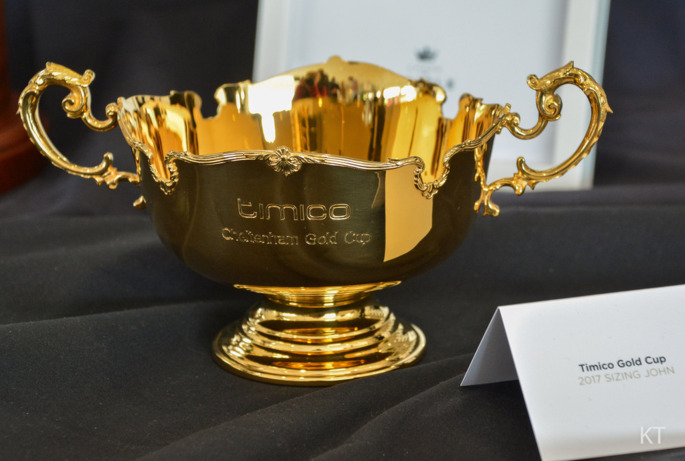
Few meetings in the racing calendar have the history and prestige of the Cheltenham Festival. Not only does it boast countless much-loved races during the four days that it’s on, but it is also the home to one of British horse racing’s most famous events: The Gold Cup (trophy shown above). The meeting’s origins are inextricably linked to the inauguration of the National Hunt Chase Challenge Cup, which was run for the first time at Market Harborough back in 1860. As we’ll explain here, however, it took far longer for the festival to reach its modern day proportions.
The Early Years of Racing in Cheltenham
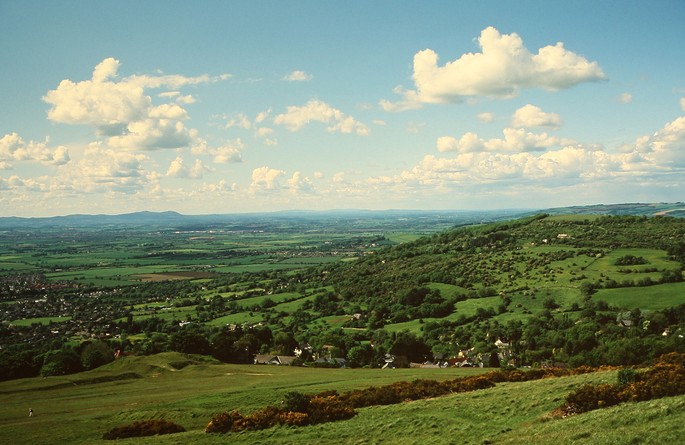
Cleeve Hill, Gloucestershire, by Dean Morley, flickr
The first known organised horse race to occur in Cheltenham took place on the Nottingham Hill area in 1815. It proved to be an uneventful occurrence, with no racing taking place in the town again until 1818. In that year it was in Cleeve Hill and five different races took place. It was obviously far more popular than it had been in 1815 as it happened again the following year. Far more had been done to prepare for the 1819 version of the racing, however, with a grandstand having been built, a track laid and three days of racing put on instead of one.
The success of that meeting meant that racing had seemingly found a new home at Cheltenham, with crowds over the following decade growing to the point that more than fifty thousand people were turning up to watch it. A minority of people weren’t there for the horses, but instead for the purposes of picking pockets, meeting with prostitutes and worse. It led to the local rector, Reverend Francis Close, suggesting to his parishioners that it wasn’t a good thing for the area. In 1829 bottles were thrown at the horses and their jockeys, whilst in 1830 the grandstand that had been built more than a decade before was burnt down.
From 1831 until 1834 racing moved from Cleeve Hill to Prestbury Park, but the ground wasn’t as good so it returned to its former location in 1835. At that point in English history an economic depression had hit and flat racing lost its lustre. Attempts were made to encourage people to return but by 1843 it was all but over for the region. That was also to do with the rising popularity of jump racing, with the Grand Annual Steeplechase drawing large crowds in Andoversford in 1834. Part of the attempts to revive racing in Gloucestershire involved having the race run at Prestbury Park between 1847 and 1853.
The Creation of the Festival
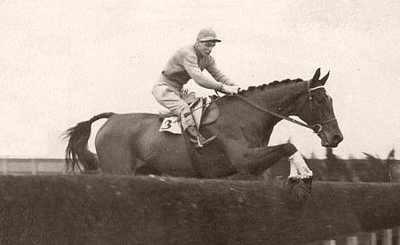
All of the above might seem incidental, but it helps to explain why W.A Baring Bingham bought the ground at Prestbury Park in the hope of returning the site to its former racing glory. Initially the ground was used as a stud farm, but in 1902 he put on a two day meeting that was given the name ‘The National Hunt Festival’. Meanwhile another event by the name of the National Hunt Meeting, which had started at Market Harborough in 1860 and included the aforementioned National Hunt Chase Challenge Cup, was moving from venue to venue and attracting plenty of interest.
The National Hunt Chase Challenge Cup was considered to be one of the most prestigious races in the British horse racing calendar, with cities and towns competing to see it run on their racecourses during its more formative years. One such town was Cheltenham, which had been looking for a top-class race in order to see horse racing return to the area in a more serious capacity.
Baring Bingham was able to persuade the National Hunt Meeting’s organisers to host the event at his Prestbury Park location in 1904 and then again in 1905. In 1911 it was decided to move the Meeting forward to March and to host it at the Cheltenham location permanently. That was an unquestionable boon for the area, with racing once again a permanent fixture on the course. Even so, it wasn’t until Frederick Cathcart became involved that the meeting began to grow into what it would later become. He suggested that Cheltenham should be the home of jump racing in the same way that Newmarket was considered to be the home of flat racing.
In 1923 Cathcart oversaw the expansion of the festival to be three days long, with no sign of interest in the racing slowing down. The year after he also introduced an event that would become the pride of the entire festival, the Gold Cup. Since then, of course, the meeting has grown and grown. In the 1930s a horse named Golden Miller won five consecutive Gold Cups, including an unprecedented double of the Gold Cup and Grand National in 1934. All of this increased public awareness of the Cheltenham Festival and it has continued to grow ever since.
The Development of the Course
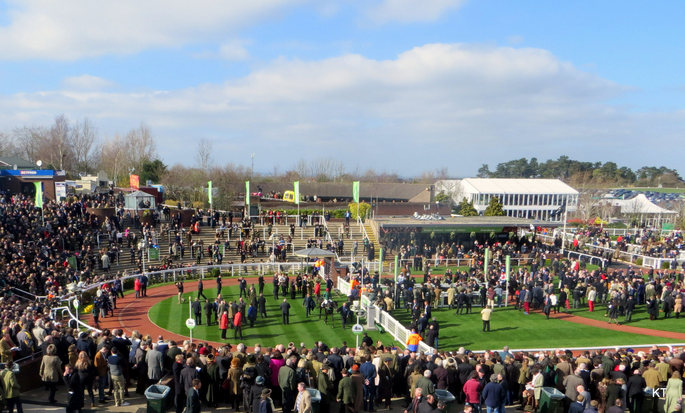
For all that Golden Miller caught the public’s imagination, it was the invasion of the Irish to the festival that really saw it take off. The Emerald Isle’s love affair with Cheltenham began at the end of the 1940s when Cottage Rake won three consecutive Gold Cups. It was the first time an Irish trained horse had won the race and the Irish have been coming back ever since. There’s even a competition each year to see whether more English or Irish trained horses will win races during the week of the festival called the Prestbury Cup.
The increasing popularity of the festival also led to an increase in investment for the venue from outside sources. In the 1960s a group called Racecourse Holdings Trust bought Cheltenham Racecourse and put a massive amount of money into its redevelopment. As an example, the grandstand that has remained the same since it had opened in 1911 was upgraded in its entirety. The BBC also decided to add horse racing from Cheltenham to its outside broadcasts, allowing more people to be involved in the excitement.
It was in amongst all of this that Arkle came to the fore and saw Cheltenham’s profile shoot into the stratosphere. He won a hat-trick of Gold Cups in the 1960s, as well as winning 27 of the 34 races he ran, including 23 when he was carrying an extra twelve stone or more in weight. Visit Cheltenham Racecourse and you’ll see a statue of Arkle in the grounds; a testament to just how good a champion he was.
The Cheltenham Festival Today
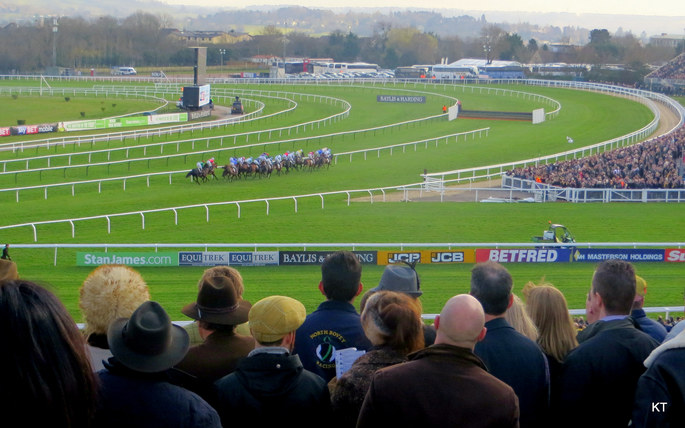
All of that is from the festival’s history, though, so what of it in the present day? It is considered to be one of the highlights of the sporting calendar, matching the likes of the FA Cup Final and Wimbledon in terms of interest from the public. There have been some stunning races over the years, such as when Istabraq won a hat-trick of Champion Hurdles in the 1990s or when Best Mate won three Gold Cups between 2002 and 2004.
The Cheltenham Festival holds a position of genuine respect in the horse racing industry, which is noticeable by the fact that pretty much the entire jump racing calendar feels as though builds up to it. It is the climax of the year in jump racing, with only the Grand National coming after it and being considered to be a race of equal importance. The meeting uses both the Old and New Courses, starting on the old at the beginning of the week before switching to the new for the second half of the festival.
In 2014 the meeting saw over 230,000 punters pass through the gates, with over £250 million wagered around the world.
Interesting Facts
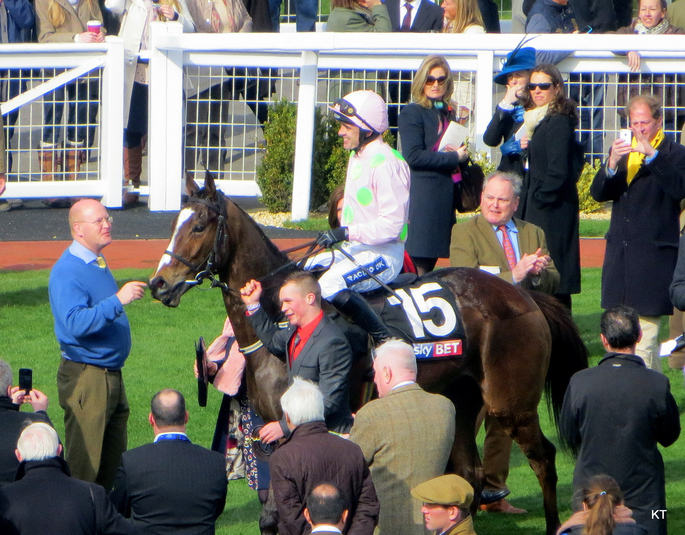
Ruby Walsh is the most decorated Jockey at the Cheltenham Festival wining the ‘Top Jockey Award’ no less than eleven times. His most successful festival meetings were in 2009 and 2016 when he amassed seven victories over the four days, the most victories by any jockey at the Cheltenham Festival.
Willie Mullins is the winning most trainer from the festival with 94 wins, winning the ‘Top Trainer’ award ten times. The most victories for one trainer at a meeting also lies with Willie Mullins who had ten wins in 2022.
As mentioned earlier, the pinnacle of the festival is without doubt the Gold Cup. Since the race was first run in 1924, some of the best horses to grace the planet have been victorious in the race. No horse has won the race more times than Golden Miller, who won the race on five consecutive occasions 1932 to 1936.
Another standout name from the archives of the Gold Cup is that of Arkle. The horse is without a doubt a legend within racing circles and won the race three times in a row from 1964 to 1966.
In more recent times, the head-to-head battles of Kauto Star and Denman, who crossed paths between 2007 and 2009 with some breath taking races. Paul Nicholls was lucky enough to own both horses, but Kauto Star had the upper hand in the fascinating duel winning twice in 2007 and 2009, whilst Denman picking up his win in 2008. There are other facts to tell you about, of course, so here’s a little look at some of the more fascinating ones
- The Festival features 28 National Hunt races over the course of its four days
- Five tons of cheese and five tons of smoked salmon are eaten during the festival
- Meanwhile, eight thousand gallons of coffee and tea are served
- The maximum capacity of the Racecourse is seventy-thousand, which is for Gold Cup Day, though this is now capped at 68,500
- The average attendance on each of the four days is around sixty-five thousand
- Cash machines dispensed £2.3 million during the festival in 2016
- For the local Gloucestershire region, the meeting is believed to bring in about £100 million
- The most successful horse in a single race is Quevega, who won the David Nicholson Mare’s Cup every year between 2009 until 2014
- There are 350 chefs on site for the week and one of the things they’ll be cooking is nine tonnes of potatoes eaten during the festival
